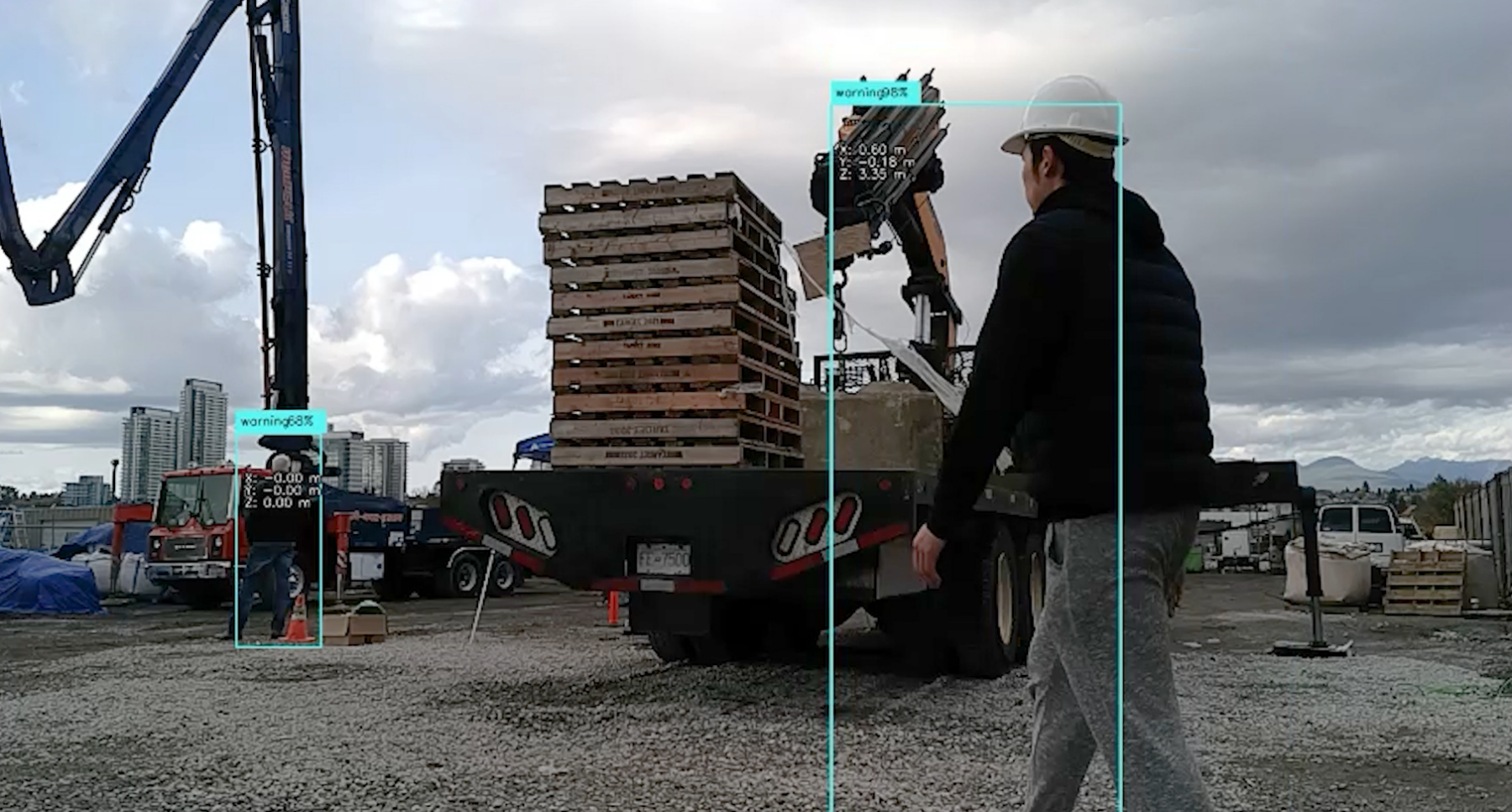Researchers: AI robots are ready to automate the jobsite
The technology is currently being tested at projects in B.C.

Lead researcher Tony Yang (left) watches with a colleague as the robot precisely places objects on site. – UBC Applied Science
Key Takeaways:
- Researchers at the University of British Columbia (UBC) have spent years developing AI and robotic solutions for construction.
- They recently demonstrated that their robots can scan sites, create a digital twin and begin doing tasks that it recognizes as unfinished when compared to the BIM model.
- The team has also written algorithms that recognize humans and hazards so the robots will stop work if someone is in danger or adjust their path if something is in the way.
The Whole Story:
Autonomous construction robots are ready to graduate from the classroom and begin doing real construction work on jobsites.
UBC Faculty of Applied Science researchers recently demonstrated at a real site how their technology can transform construction vehicles — cranes, forklifts and excavators — into smart construction robots powered by AI.
Structural engineer Dr. Tony Yang, a professor of civil engineering and lead researcher of the Smart Structures lab, believes these robots will help to speed up construction times, make construction sites safer and address labour shortages.
Yang and his team deployed their technology at a site on Mitchell Island in Richmond, B.C. for a crowd of construction company representatives. Aerial drones fitted with cameras captured details that were then used to create a digital twin of the site. AI-equipped cranes and forklifts used this information to move construction materials such as beams and columns around the actual site, navigating around obstacles without needing a human operator.
“So over the last few years we have been developing many novel AI algorithms to allow us to actually be able to execute this,” said Yang. “We’re riding on this wave because AI technology is now actually very mature and it can be easily applied. You can see cars driving by themselves. We can start using this kind of technology to do autonomous construction.”

Yang explained that the smart construction robots are able to recognize objects, performing detailed scans of structural components for quality assurance. They can precisely place objects on site and check against a computer model to ensure they’re building according to plan. They can make autonomous decisions such as navigating around obstacles or instantly stopping work to protect a worker who is in danger.
“Once these things become more mature and the first jobs get going, it will just roll it by itself because it’s cheaper, faster and safer and there is zero ramp up time,” he said. “You don’t need to train people. It’s already immediately deployed. So it will become the only way to do it.”
Yang believes AI and robots can help solve construction’s labour crunch in a way that is cheaper, faster and safer than traditional methods.
“The new generations, like Generation Z and Generation X, they really don’t like to go to construction sites. It’s a very harsh environment. It’s tiring,” said Yang. “It’s getting very difficult to actually get skilled workers to work in many places. The idea behind this is now we can start building with robots. We can train the robot to do our jobs, to make the construction more efficient.”
He explained that this would eliminate laborious tasks and elevate skilled workers’ roles on a site.
“I envision those skilled workers as skilled managers and they can start managing more projects, even remotely overseas. They can be elevated and the machines are doing the dirty jobs,” said Yang.
Yang believes we are at a point where the technology works and is ready to be deployed, but the biggest barrier is the industry itself.
“The construction industry is usually very reluctant to change,” he said. “One reason is because the business model is to have this crew of people and then charge by the hour. It’s like a big mothership and it can be difficult to change directions.”
Yang noted that previous implementations of AI and robots in construction pale in comparison to what can be done now. The technology has been used for painting or tiling but he believes it is ready for real construction work that creates the actual structure of a project. And while the industry may be reluctant to change, Yang says it is inevitable.
“I think in the next 10 years, this is the only way to do business because no one will be there to do it,” said Yang. “Our skilled workers are retiring. They cannot do it. So it will be unavoidable. We are lucky we’re pushing the envelope, but there’s still a lot of work ahead of us.”
The demonstration was performed in front of dozens of construction company representatives and Yang said he and his team plan to continue developing the technology.
Next on his radar is applying AI and autonomous machines to excavation tasks and working with local builders to test the technology out in a variety of situations and weather conditions.

